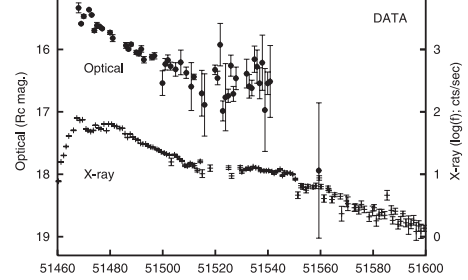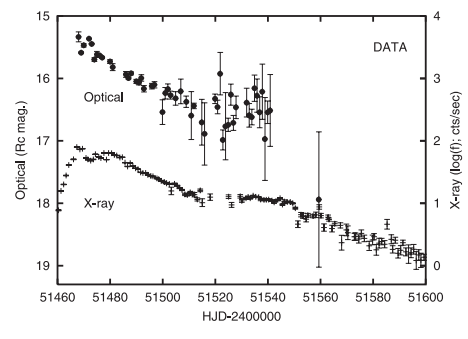Component separation of rapid variations in black hole X-ray binaries

Omama, T., Uemura, M., Ikeda, S. and Morii, M., “Extracting common signal components from the X-ray and optical light curves of GX 339−4: New view for anti-correlation”, PASJ, 73, 716, 2021
Simultaneous X-ray and optical observations of black hole X-ray binaries have shown that the light curves contain multiple correlated and anti-correlated variation components when the objects are in the hard state. In the case of the black hole X-ray binary GX 339-4, the cross correlation function (CCF) of the light curves suggests a positive correlation with an optical lag of 0.15 s and anti-correlations with an optical lag of 1 s and X-ray lag of 4 s. This indicates that the two light curves have some common signal components with different delays. In this study we extracted and reconstructed those signal components from the data for GX 339-4. The results confirmed that correlation and anti-correlation with the optical lag are two common components. However, we found that the reconstructed light curve for the anti-correlated component indicates a positively correlated variation with an X-ray lag of ~+1 s. In addition, the CCF for this signal component shows anti-correlations not only with the optical lag, but also with the X-ray lag, which is consistent with the CCF for the data. Therefore, our results suggest that the combination of the two positively correlated components, that is, the X-ray preceding signal with the 0.15 s optical lag and the optical preceding signal with the 1 s X-ray lag, can make the observed CCF without anti-correlated signals. The optical preceding signal may be caused by synchrotron emission in a magnetically dominated accretion flow or in a jet, while further study is required to understand the mechanism of the X-ray time lag.



